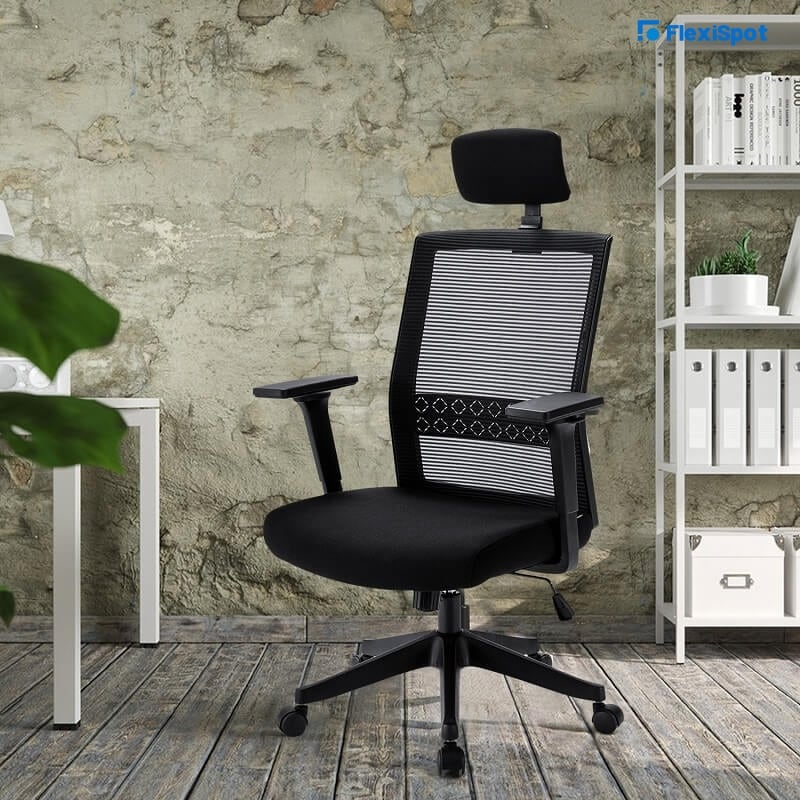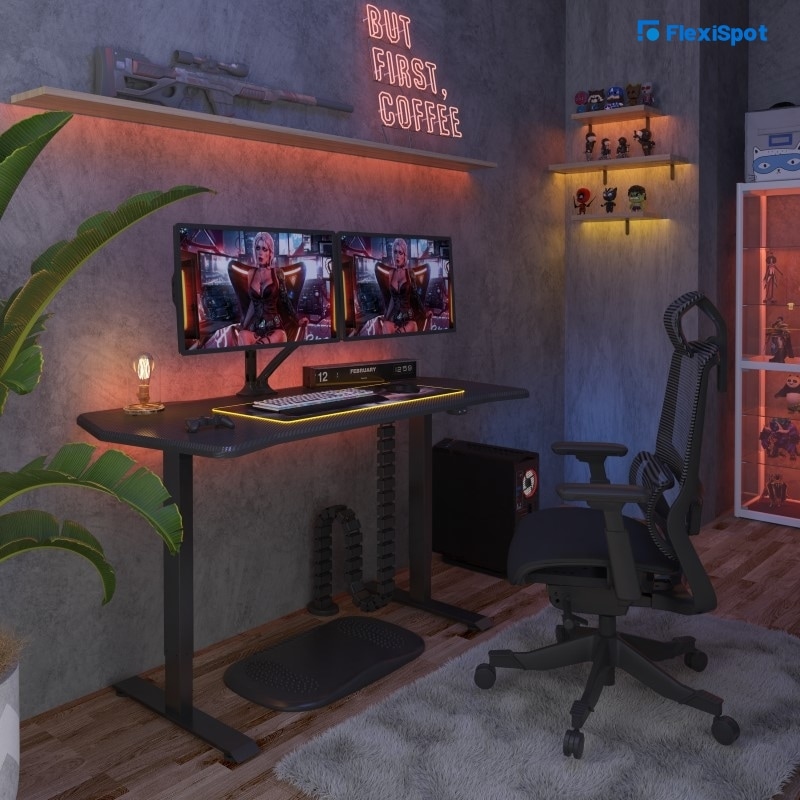Knee pain is a common complaint among people of all age groups. There is a common misconception that pain in the legs – including the knees – is more prevalent among those who live active lifestyles. Runner’s Knee, for example, is a condition that causes pain in the knees, and the name could mislead some into believing that this is a problem only for athletes.
In reality, this is far from the truth.
Our knees carry a lot of body weight and are used very frequently. So even for people with relatively inactive lifestyles, knee pain is a very common problem. In fact, even sitting still for too long can result in knee pain and stiffness – particularly if you stay in the wrong position for an extended amount of time.
This becomes a bigger problem when you consider how many of your daily activities are more convenient to carry out while sitting. Whether that’s work, eating, commuting, or simply playing a game, many of us choose to do these things while sitting. If this causes you to pain in the knee, even your day-to-day life can become difficult.
Let’s look at some common causes, and how you can prevent knee pain caused by sitting.
Common Causes of Knee Pain While Sitting
If you spend a lot of your time seated, you may be causing trouble for your knees. This is particularly true for those with desk jobs, or gamers, who stay in one place for long periods. It may not occur to you, but sitting can actually be a very difficult position to maintain, especially for your joints.
Sitting For Long Periods of Time
If you’re sitting for more than an hour at a time (and this is usually the case), you may find that your knee starts to hurt. This is because of the inactivity in your knees. Your muscles and tendons in the area can become stiff, causing you pain.
Experts suggest that the best way to prevent this issue is to avoid sitting for prolonged periods. Staying seated for more than six to eight hours a day is considered to be bad for you. However, most of us can’t actually avoid staying seated – maybe due to the nature of our work or because of convenience – in which case, it is best to move around every 30 to 60 minutes.
Bad Sitting Position
Sitting in a bad or awkward position can also cause pain in the knees, especially if you have your legs crossed or bent underneath you. This puts pressure on your kneecaps and causes problems.
Bad Furniture
If you’re not using ergonomic furniture, this can also cause problems for your knees. For people who spend a lot of time sitting, the furniture they use can be a major contributor to their health problems. If your workspace does not provide you with the correct height or distance, you could be holding yourself in an uncomfortable and awkward position, which can put pressure on your knees and tire you out as well.
Knee pain is also often associated with keeping your chair too low or positioned in a way such that your knees remain bent for a long time.
Underlying Causes of Knee Pain
Of course, not all knee pain is a result of your posture and the length of time you remain seated. Sometimes, there may be underlying problems that could be contributing to the pain, making the discomfort worse than it would be otherwise.
Arthritis
Arthritis is a disease that affects the joints. If you don’t move your knees for a while and realize that they have become stiff and painful, it may be osteoarthritis. This problem also causes you to feel discomfort when you stand up from sitting. Osteoarthritis is joint inflammation and usually affects older people but can be found in younger folks as well.
Osteoarthritis will usually involve physical therapy or medicines for treatment, and in some severe cases, joint replacement.
Patellofemoral Pain (PFP)
PFP is the medical name for Runner’s Knee, which we mentioned earlier. A study in 2016 showed that about half the people who have PFP also have problems sitting for prolonged periods with their knees bent. PFP also causes discomfort while squatting, or while climbing up or down the stairs. The treatment will usually involve rehabilitation exercises and supports, and in some cases, may require surgery.
How to Prevent Knee Pain While Sitting
Lifestyle Changes
Incorporating Exercises
Since a large part of knee pain, while sitting comes from inactivity, the best solution would be to become active!
Of course, this is not something everyone is capable of, and there is only so much activity you can incorporate into your day if you have to spend a lot of time sitting. However, including more activity in your day can be beneficial for preventing knee pain since it will keep your muscles and tendons fit and avoid stiffness.
A study in 2013 found that the most common therapy for problems in the knee that healthcare providers would recommend is physical therapy. This involves a lot of exercises, such as yoga or swimming. Keeping your knees flexible will prevent strains.
You should also try to incorporate strength-building exercises into your day. Strengthening the muscles in your legs and thighs also reduces the stress on your knees.
You should also make a habit of getting up and stretching your legs once every 30 to 60 minutes to keep your knees from becoming too stiff.
Diet Changes
If your diet is not balanced, you may want to look into that as well. A healthy diet provides your muscles with the proteins they need. You should also try to include anti-inflammatory foods into your diet to avoid inflammation problems, which are common for joints. There are also specific foods that help with joint problems, such as cold-water fish that contain Omega-3 fatty acids, nuts, fruits, and vegetables, etc.
Eating healthy will help build your bone density and strengthen the connective tissues around your joints, preventing knee problems.
Changes in Furniture
Find the Right Chair
Your posture has a significant impact on whether your knees are comfortable or not. When sitting for long periods, you want to make sure that you’re not putting stress on your knees while also keeping the rest of your body – your back, neck, and arms, especially – in a correct position.
An adjustable chair is the best option. Move the seat so that your thighs are parallel with the ground, and your knees are in line with your hips. Your arms should also be parallel with the ground. If your feet aren’t resting on the floor, you should find yourself a stool or footrest, that will help you achieve this position. Keeping your feet on the floor helps your body weight gets distributed evenly across your hips.
If your arms are extended too far from your body, this could cause stress in your shoulders and arm muscles, so you want to keep your arms positioned at your side in an L-shape.
Find an Adjustable Desk
While chairs are usually adjustable, they are often limited in how far up or down they can go. If you are a bit taller or shorter than average, this can cause problems since you’d still be putting yourself in an awkward position. Sometimes, you may find yourself in a pickle where if you keep your legs in the correct position, you may be putting stress on your neck because your monitor isn’t at eye level, or vice versa.
An electric height adjustable gaming desk is a great investment to maintain the correct posture throughout. A lot of gaming equipment is designed to provide gamers comfort and support for the long periods they spend in one place.
With easy controls, you can adjust the height of the desk surface to accommodate your height and posture so you can be comfortable, and avoid knee pain while sitting.
The Flexispot adjustable desk also comes with a carbon fiber textured top that is resistant to water and stains, and also keeps your equipment in place. There is also a curved ergonomic desktop, which matches your body more naturally than the rectangular desks you’d find traditionally. This provides extra support to your elbows and wrists.
In today’s world, where most tasks are done on computers, knee pain is becoming an increasingly common problem. Though there are ways to cure it, it is always best to prevent the issue than to go through the trouble of curing it later.
Make sure to increase your daily physical activity and give your knees the stretches they need to stay healthy, and invest in the right adjustable furniture, so you can avoid any troublesome knee problems.




